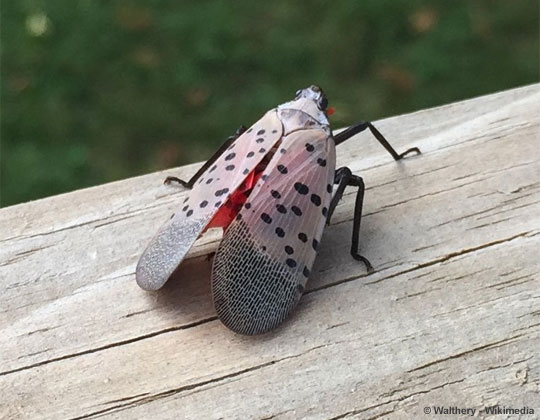Recently, you may have noticed an abnormal amount of large flying insects in Fairfield and the surrounding county, potentially in areas adjacent to nature such as the beach or a park. Many of these are the adult Spotted Lanternfly, an invasive species of Asian origin that has been spreading transcontinentally, including in the eastern United States, a threat that has been increasing in recent years.
They are identifiable by their spotted light brown wings with a contrasting patch of bright red with black spots. Don’t worry, they don’t bite or sting like some of the more unpleasant bugs you might encounter, but they are still a notable threat to Fairfield.
Since they aren’t native to Connecticut, they lack the natural predators that would keep their populations in check, stopping them from feeding on large amounts of local vegetation. This contributes to the threat that they pose to our environment, because they are essentially free to grow and feed upon plants indefinitely.
According to the U.S. Department of Agriculture, an invasive species is a species non-native to a certain ecosystem that causes, or is likely to cause, environmental harm, economic harm, or harm to human health. In this case, the Spotted Lanternfly is considered an invasive species because their presence in the United States could cause environmental harm. The Connecticut Department of Energy and Environmental Protection states that 47% of Connecticut’s forest trees are potentially vulnerable to the insect. Many of the fruits grown in Connecticut are also vulnerable to the Spotted Lanternfly, including grapes, peaches, cherries, and apples, which means that the value of certain fruit crops could be severely damaged.
Overall, the crop loss and damage to local foliage contributes to a negative impact on agricultural industries, tourism, and the lifestyle of locals.
The Connecticut Department of Energy and Environmental Protection has asked that citizens kill any Spotted Lanternflies that they see, as well as take efforts to inspect their vehicles for stowaways in order to avoid furthering the spread. Basically, their advice is “if you see it, stomp it,”- a memorable phrase used to guide citizens on the action they should take against the insect.
The issue is being addressed with pesticides in some areas, but it is still important to stomp any you may encounter. Some people may be hesitant to kill bugs and prefer to just catch them and release them outside, but in this situation it is important to kill them if possible. It is not the same as letting a fly in your house outside, because the Spotted Lanternfly is highly invasive, reproduces in large quantities, and generally has a significant negative impact on our town and state.
As Cecilia Sequeria, a spokesperson for the US Department of Agriculture, put it, killing them is crucial because “every single one of them can lay 30 to 60 eggs, and every time you stomp one out that’s one more that isn’t reproducing. Every little bit helps; it is a very prolific pest and we’re probably their biggest natural enemies. It’s pretty important that people do their part.” Since the Spotted Lanternfly is invasive and has no natural predators in the United States, the best way to address the problem is for us humans to act as their predators in order to regulate their population growth and protect Connecticut’s environment.
At this time, it is unclear what impacts the insect will have long term. Experts from the Cornell College of Agriculture and Life Sciences have stated that it does not appear the insect has caused significant agricultural harm outside of an impact on grape crops, so far. This issue is still being monitored, but it is best to proceed with caution and do everything we can to reduce the threat in the meantime. This means, in order to do your part in the battle to protect Connecticut’s environment from the Spotted Lanternfly, if you see it, stomp it!








